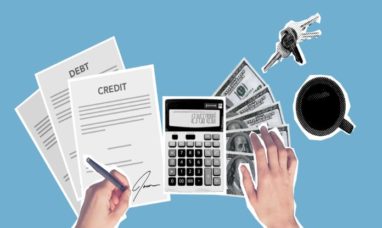Finally, there is some good news for U.S. small business owners. The government has developed the Paycheck Protection Program in response to a severe economic crisis that has resulted in the closure of roughly 10,000 firms (PPP). There are specific crucial details to be aware of, even though the application deadline for this loan has been extended. Precisely what is a PPP loan? Who is eligible to apply for it, too? These frequently asked questions have answers online.
The PPP loan can assist you if you’re a struggling business owner. To learn how PPP loans are helping small firms, start an online search.
What you need to know about PPP loans and their extended deadline is provided here.
What Is the PPP Loan Process?
The Paycheck Protection Program was implemented to prevent companies from going out of business and laying off workers in 2020. The application deadline was originally set for March 31, but President Biden has recently extended it to May 31, 2021.
This is excellent news for business owners who still need to utilize the program. The loan provides money to struggling small businesses so they can pay for what they need to continue operating. Payroll costs, benefits, mortgage interest, rent, utilities, and supplier fees and expenses are all included in this.
These loans have a five-year repayment term and a one percent interest rate.
However, the U.S. Small Business Administration (SBA) does forgive loans, provided the funds are put toward allowable costs and all requirements for employee retention are satisfied.
The maximum loan for first-time borrowers is $10 million, or 2.5 times their monthly payroll costs on average.
5 Second-time PPP borrowers may also be eligible to receive up to $2 million, or 2.5 times their typical monthly payroll expenditures. The government is enabling hospitality and food service businesses to borrow up to 3.5 times their typical monthly payroll expenditures.
Are Self-Employed Persons Eligible?
The Paycheck Protection Program is available to contractors and those who work for themselves. The PPP loan is available to solo proprietors with or without payroll expenses.
Suppose you operate as a sole proprietor without incurring payroll expenses. In that case, the amount of your PPP loan is determined using your gross income. Your gross income, up to a maximum of $100,000, divided by 12 and multiplied by 2.56, will determine the amount of your PPP loan.
There are several extra processes for lone proprietors with payroll costs. Searching online will reveal more information.
Who Is Eligible for a PPP Loan?
Anyone eligible for a PPP loan, regardless of whether they are self-employed or run their own business, must fulfill a number of crucial requirements.
It’s critical to comprehend precisely which kinds of companies are eligible for PPP loans. The following organizations, according to the SBA, are qualified for a PPP loan:
Self-employed people, sole proprietors, and independent contractors.
Any small business that satisfies the SBA’s requirements for size.
Any company, non-profit, veterans’ organization, or tribal business concern with a minimum of 500 employees or with a revenue threshold of $500 or higher.
Any company with more than one physical location has a NAICS code that starts with 72 and employs less than 500 people per site.
You can be qualified for a Second Draw PPP loan if you’ve already gotten a PPP loan. The only difference between the requirements and the application process is that the loan’s maximum amount is $2 million.
Search Online To Submit A Ppp Loan Application
A Paycheck Protection Loan application and approval process are relatively straightforward. You may apply as long as you match the requirements.
By using Loan Match, you can locate a lender. It can link you with potential lenders who provide financing backed by the SBA. Provide basic information about your companies. You will get an email in two days with the contact details of lenders interested in your loan.
Before submitting formal loan applications and paperwork, you can speak with lenders and compare different interest rates. Lenders may consider various details throughout the procedure when deciding whether or not to extend a loan. A few examples are a business plan, the amount and use of funds, credit history, financial projections, collateral, or industry experience.
Ensure that you have this data on hand in case of a lender requests it. Remember that the PPP loan application deadline is May 31, 2021. Do some online research to find out more about this loan and begin the application process.
Featured Image: Pexels © John Smith







